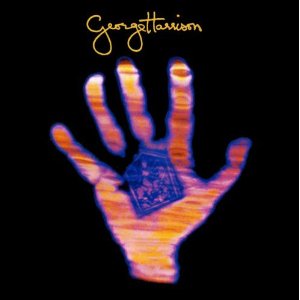Listeners:
Top listeners:
-
play_arrow
Fun Size Trending Topics September 23, 2021. His Name? St. Dangerous Of Course CD929


We all want to keep up with the latest and greatest music news. But sometimes, it’s great to look back on all of the fantastic (and not-so-fantastic) events in music that got us to where we are now.
 Fifty years ago on this day in 1973, George Harrison’s Living in the Material World went to #1.
Fifty years ago on this day in 1973, George Harrison’s Living in the Material World went to #1.
I have always imagined that following up a critically-acclaimed or hyper-successful album has to be one of the most stressful jobs as an artist. I can’t imagine the kind of stress Carole King (for example) must have experienced as she wrote her next album after Tapestry. Alanis Morissette had to have felt the pressure after Jagged Little Pill. Olivia Rodrigo right now is carefully planning her follow-up to Sour. I could go on and on with examples of breakout albums that artists then had to show weren’t a fluke.
George Harrison released his debut album All Things Must Pass in the immediate wake of The Beatles break-up in 1970. It went to #1 and was nominated for album of the year in 1972 (it lost to Tapestry, funnily enough). Although All Things Must Pass was Harrison’s first album, it’s also a triple album that spreads across three records, with one LP just for “Apple Jam,” a series of mostly instrumental jam tracks. Some songs are under three minutes, but others stretch to five and seven minutes, as Harrison takes us on an inaugural adventure through his songwriting prowess. All Things Must Pass is cohesive despite the fact that songs for it had been compiled by Harrison during the latter half of the sixties as The Beatles turned down many of his compositions. All Things Must Pass is a masterpiece.
Harrison didn’t stop there, of course. His next project was one of the very first (if not the first) benefit concerts, The Concert for Bangladesh, a humanitarian-aid project complete with a film and album whose sales benefited the people of Bangladesh. Harrison learned about the growing problems in Bangladesh from his friend, musician Ravi Shankar, who was one of many high-profile musicians who appeared on the album. Leon Russell, Ringo Starr, and Bob Dylan also performed, with other famous musicians such as Billy Preston backing them up. The release date for the album was pushed back multiple times as a dispute between Apple’s U.S. distributor, Capitol and Dylan’s label Columbia raged on. In addition to the dispute between the labels, Harrison fought with Columbia over their insistence that they should receive twenty-five cents per record sold, the money going to the label itself and not the charity or even the artists. Harrison struggled to ensure that as much money as possible was directed toward relief in Bangladesh. Despite the issues preceding its release, The Concert for Bangladesh sold well and was eventually named “Album of the Year” at the 1973 Grammys.

So imagine being George Harrison in late 1972 as he prepared to record his new album: you’re nearing 30, your marriage is falling apart (Harrison and Pattie Boyd would divorce in 1974), your former friends are suing you and vice versa to get out of legal contracts. You feel strongly about your spiritualism but find yourself unable to escape earthly desires such as drugs, infidelity, fast cars, and material possessions. Everyone either expects another All Things Must Pass out of you or is rooting for your failure since they know you had years to compile the tracklist for All Things Must Pass.
Somehow, Living in the Material World attempts to stay sweet and positive, even when it’s heartbreaking. It’s a gentle pop-folk album, it’s a funky honky tonk record. It covers issues from world peace to legal disputes – and that’s just in the first two songs! Harrison scored his second of only three solo career #1s with “Give Me Love (Give Me Peace on Earth),” an incredibly heartfelt song that displays a sentiment that could have easily been marred by a singer’s ego or disingenuousness. It’s a melancholic record that sobs for the state of the world. It sobs too for the state of Harrison’s life, which must have felt like it was crumbling to a 30-year-old man. Harrison struggled with depression throughout his life. I don’t think he often referred to it as such but that’s why he wrote songs like “Here Comes the Sun” and “Blow Away,” two tracks about coming out of depression through the metaphor of weather. Depression leaks into the tracks of Living in the Material World without many outward mentions.
It’s a deeply religious album for Harrison, with many songs being either outward or subtle spiritual messages. He allegedly spent almost a full day meditating and chanting prior to work on the album. A very common theme in songs is the notion that people are too focused on themselves and on trivial things to seek out greater spiritual knowledge. Religion had long played a role in Harrison’s work, but it was never more overt than on Living in the Material World.
In 2006, the album was remastered with two additional tracks, “Deep Blue” and “Miss O’Dell.” “Bangladesh” was added on a 2014 remaster. The bonus tracks fit so perfectly with the rest that they almost seem to belong on the album. “Deep Blue” is a track Harrison wrote in 1970 as his mother was dying in the hospital. Like “Blue Jay Way,” “Miss O’Dell” was written while Harrison waited for a visitor in 1971. It’s playful while still acting as a message to Harrison himself that it was time he stood for something (when written, he was mulling over the Bangla Desh situation).
Despite commercial success, Living in the Material World received mixed reviews from critics and many fans. Although All Things Must Pass also contained religious messaging, Living in the Material World was finally the point at which some thought Harrison had gotten “too preachy.” The album was not the massive success of All Things Must Pass and was all but forgotten over the years until more-recent audiences began to recognize the beauty and craft of the album and its place in Harrison’s history and discography.
On this day in 1973 though, Living in the Material World was flying high at #1 in the U.S., where it stayed for five weeks.
–Just Emma (JustEmma@CD929FM.com)
Written by: Emma Sedam
Flashback Friday George Harrison

